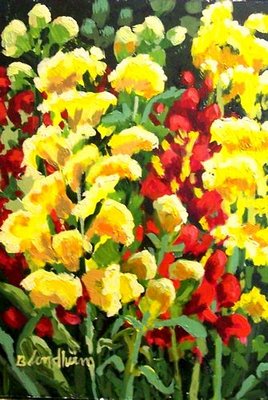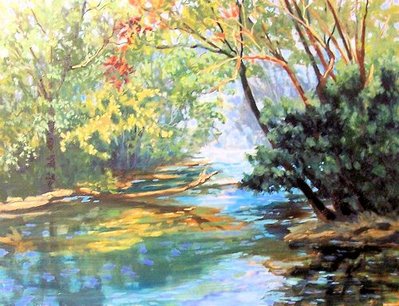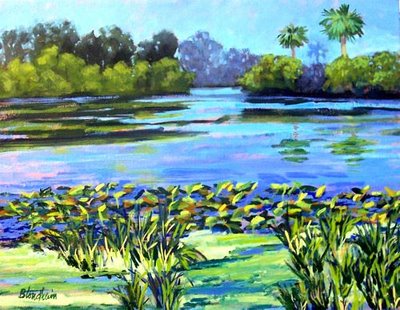
18x24 inches
oil on canvas
silver frame
1500.00
Purchase: HERE
Painters Tip
Saving a Painting
Sometimes we just start out badly in a painting. It is often because we are rushing to get to the detail part when we can make it pretty.
There are some common mistakes that I see over and over again at my workshops. First, the student applies too much paint to the surface before he/she should, making it thick and unmanageable very early in the process. Another big problem is over blending, particularly for oil painters. Dabbing the paint rather than laying on clean strokes is another common problem.
If you have a problem area in the painting,applying more paint will not help. You must carefully remove the paint from the area and start again. Take a rag, paper towel, palette knife or Q-tips and wipe it down to the bare surface of the canvas in the offending area. Then you have a second chance to repair the offending part. The paint must have a surface to hold to.
More on fixing tomorrow......































